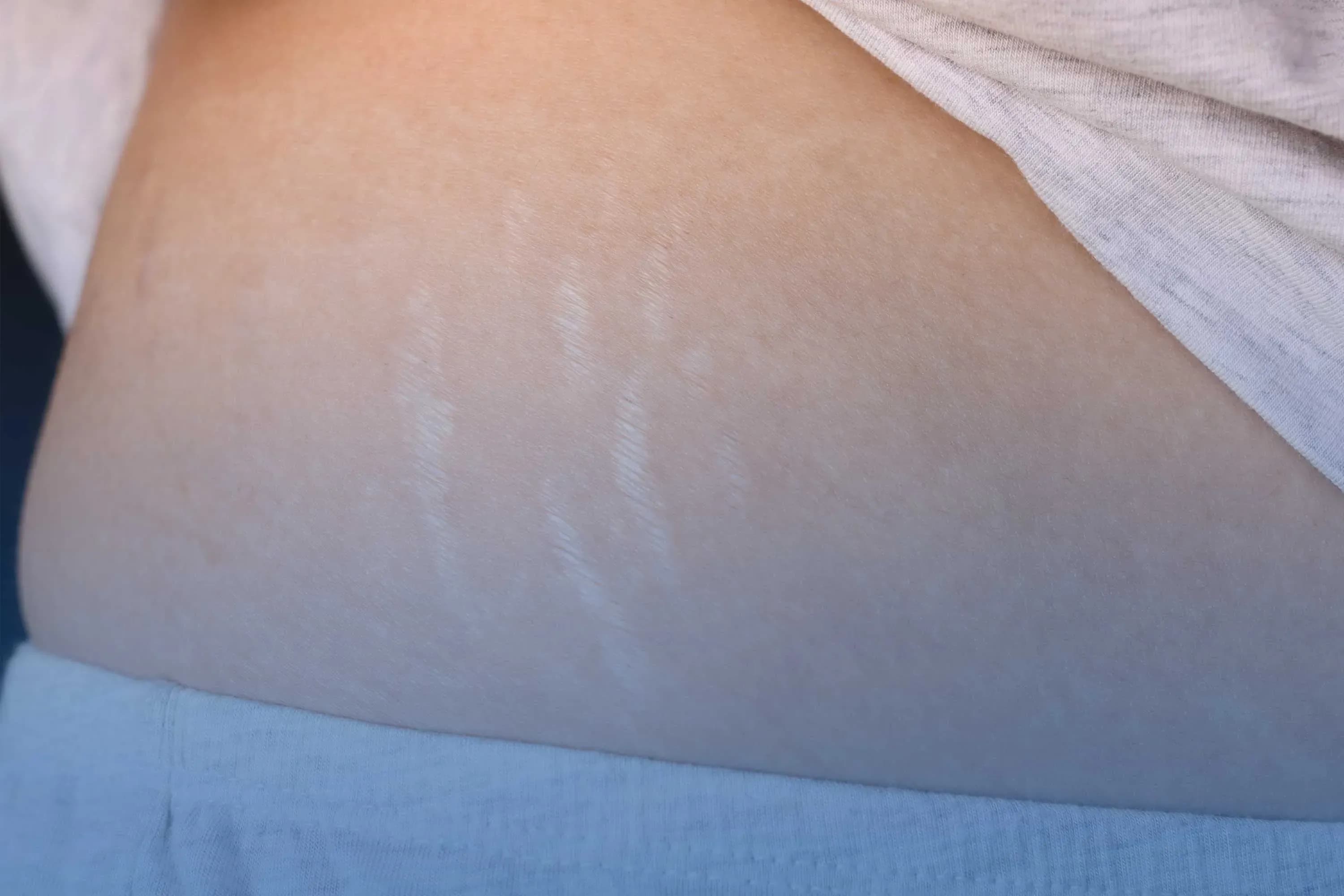Stretch marks, medically known as striae, are a common type of skin scarring that appear as long, narrow streaks or stripes on the skin.
They occur when the skin is stretched rapidly beyond its elastic capacity, causing the collagen and elastin fibers in the dermis to break.
This rapid stretching can be due to sudden growth spurts, pregnancy, significant weight gain or loss, or certain medical conditions. Initially, stretch marks may appear reddish, purplish, pink, or brownish, depending on skin tone, and can be slightly raised or itchy.
Over time, they typically fade to a lighter, silvery-white, or translucent color, becoming flat and sometimes slightly depressed. While harmless, stretch marks can be a cosmetic concern for many individuals.








